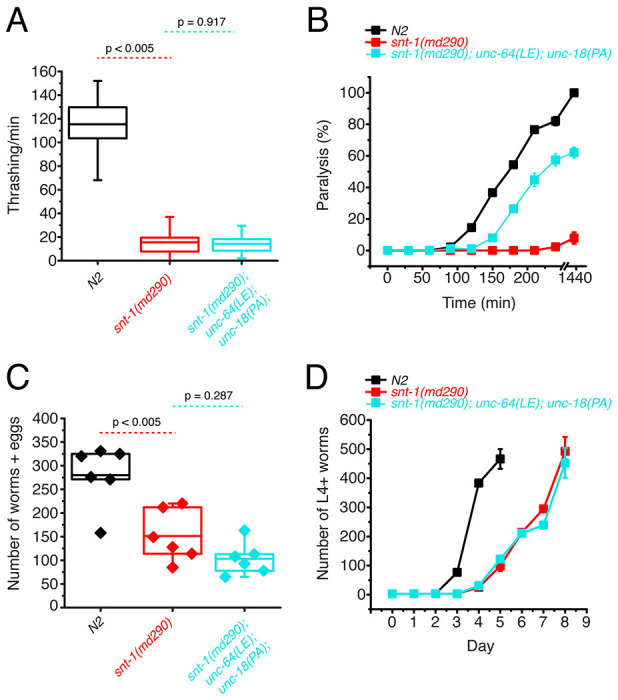Figure 2.

Double mutations of P334A UNC-18 and open syntaxin abolish the ability to rescue motility and growth speed of snt-1 while they rescue aldicarb sensitivity
(A) Box and whisker plot of thrashing for snt-1 null (red), snt-1; unc-64(LE); unc-18(PA) triple mutant (cyan), and N2 control (black). One-way ANOVA was performed (F(2, 117) = 599, p = 0.00). snt-1 null worms show decreased thrashing (16 thrashes/min) and are not rescued by the triple mutant (14 thrashes/min, Tukey’s test, p < 0.917).
(B) Aldicarb assay of snt-1 (red), snt-1; unc-64(LE); unc-18(PA) triple mutant (cyan), and N2 control (black). A rescue is seen in aldicarb sensitivity by the snt-1; unc-64(LE); unc-18(PA) triple mutant worm.
(C) Brood size of indicated strains, snt-1 null worms (red) exhibited a decreased brood size when compared to N2 (black), one-way ANOVA (F(2, 15) = 17.987, p = 0.0001), and the snt-1; unc-64(LE); unc-18(PA) triple mutant worms (cyan) trended to decrease (n.s., p = 0.287).
(D) Population growth of the indicated worm strains. N2 worms (black) sharply increased in population size between days 3 and 4 while snt-1 null worms (red) exhibited continuous growth, peaking at day 8. snt-1;unc-64(LE);snt-1;unc-18(PA) triple mutant worms (cyan) showed a similar population growth trend to that of the snt-1 null worm.
